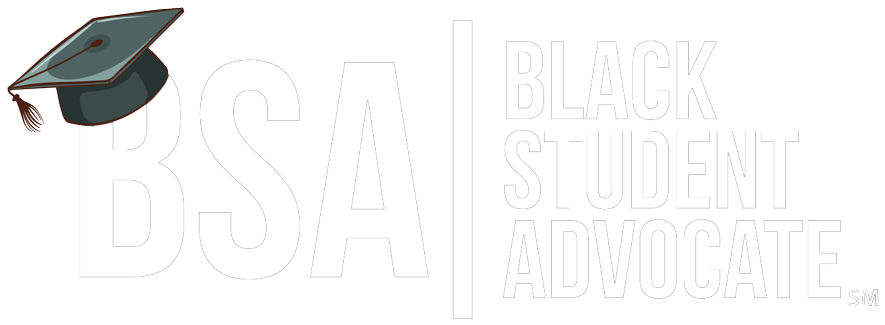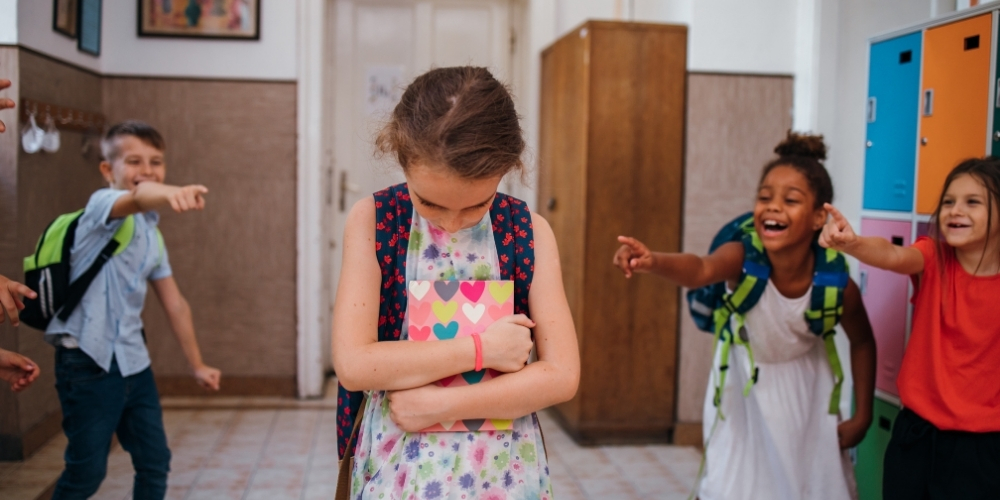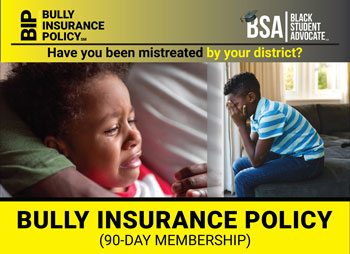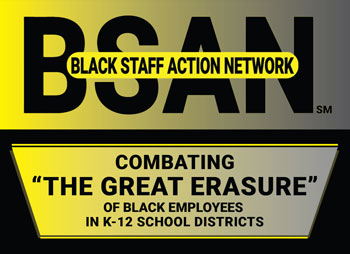For many families, the phrase “going to school” evokes images of hope, growth, and safety—an environment where children learn, explore, and build their future. Yet for far too many Black students, school becomes something very different: a space where bias, exclusion, and punitive discipline turn the promise of education into a site of hidden violence. In the United States and beyond, Black children often face not only overt threats to safety—such as bullying or physical fights—but also structural forms of harm: disproportionate suspensions, criminalizing of behavior, and an educational climate rooted in fear rather than possibility.
In this blog, the Black Student Advocate Network (BSAN) pulls back the curtain on what we call “Violence in Black Schools”—the ways in which schools designed to educate can instead become arenas of trauma for Black learners. Drawing upon both personal testimony and research, this piece outlines six critical dimensions of this violence: from the immediate safety concerns to the systemic pipeline channeling students away from school and toward incarceration. Ultimately, we aim not simply to highlight the problem, but to affirm our commitment to advocacy, transformation, and vision for schools where Black students are not just seen, but truly safe.
1. The Everyday Threats: Physical and Emotional Safety in Black Schools
When we talk about “school safety,” too often we default to concerns about weapons or external criminal threats. While those are real, for Black students another dimension of danger emerges: the internal culture of the school that signals you don’t belong, you are under suspicion, you are invisible. For example, one parent told of a daughter who came home upset because her hairstyle—a commonly worn natural style by Black children—was deemed “too big” by the teacher and she was told she couldn’t participate in a school play. Soon after, one of her hair braids was mysteriously cut.
This kind of incident may not resemble a textbook fight in the hallway, yet it is violent in its implications. It says: your identity is regulated; your body is subject to intrusion; the gatekeepers of your education do not fully see you. Additionally, research shows that Black students report higher rates of unfair discipline and feeling unsafe than their white peers. According to the Centers for Disease Control and Prevention (CDC), in one survey Black students reported unfair discipline at a prevalence of 23.1%, higher than Hispanic (18.4%) or White (18.1%) peers.
When students feel unsafe—whether emotionally, physically, culturally—they are less likely to engage, less likely to feel belonging, and more likely to carry trauma. The Black Student Advocate Network holds that safety must be redefined not just as “no fight in the hallway,” but as affirmation, inclusion, cultural respect, and trust.
2. Discipline Disparities: The Hidden Violence of Exclusion and Punishment
A significant dimension of violence in Black educational spaces is the disproportionately harsh discipline that Black students face. The research is clear: Black students are suspended, expelled, and subjected to law-enforcement referrals at far higher rates—even when behavior is held constant.
For instance, one study found that Black students were 3.6 times more likely than white students to have been suspended out of school, 2.5 times more likely for in-school suspension, 3.4 times more likely to have been expelled, and 2.4 times more likely to be referred to law enforcement. Another report by the ACLU notes that Black students with disabilities face the most extreme forms of discipline, including corporal punishment, at disproportionately elevated rates.
What makes this discipline harshness especially damaging is that it is not just unfair—it is traumatic. Exclusion from class leads to missed learning, feelings of abandonment, stigma, and often triggers a downward spiral. The Black Student Advocate Network emphasizes that when discipline becomes punishment rather than support, the school ceases to be a learning environment and becomes a site of trauma.
3. The School-to-Prison Pipeline: When Education Becomes Criminalization
The term “school-to-prison pipeline” describes how disciplinary policies, policing in schools, and exclusionary practices converge to push Black students out of educational environments and into the criminal justice system.
The hidden violence here is profound: a student is removed from the classroom not just for missing school, but effectively for breaking rules that may be minor or subjective—like “disrespect” or “defiance.” For example, in one Ohio school, a student was suspended for reacting to a teacher’s desk tapping—an innocuous moment interpreted as threat.
When that happens repeatedly across the system, the message to Black students is clear: school is not a place where you will be nurtured; it is a place where you will be watched, judged, excluded, and then left behind. The Black Student Advocate Network calls for systemic changes—less policing, more supports, and an educational culture centered on growth, not punishment.
4. Cultural Erasure and the Hidden Trauma of Racialized School Environments
Another dimension of violence in Black educational settings is the invisibility of Black culture, the undervaluing of Black children’s experiences, and the structural design of schools that reflect white norms as default. One parent reflected: the head teacher could not fathom that racism could be taking place in her school, despite the evident cut braid incident.
Critical psychology tells us that children, even as young as age 3 or 4, become aware of race and begin to internalize differential treatment. When schools ignore this reality, they contribute to racial trauma. Cultural mismatches (e.g., Uniforms or hat rules applied disproportionately, hairstyle policing, language policing) send micro-messages: you don’t belong here, you are other.
The hidden violence is in the slow erosion of identity, belonging, and self-worth. The Black Student Advocate Network insists that safety in schools includes cultural safety—the ability of Black students to show up authentically, be seen, and thrive.
5. Mental Health, Trauma, and Academic Under-achievement
Violence in educational environments is not only physical—it is deeply psychological. Repeated exclusionary discipline, cultural erasure, feeling unsafe, and experiencing bias all undermine mental health. The CDC found that students who reported unfair discipline were more likely to skip school because they felt unsafe, more likely to have persistent feelings of sadness or hopelessness, and more likely to have seriously considered or attempted suicide.
Academic outcomes suffer. Students spend less time in instructional settings, have fewer opportunities for growth, and develop distrust towards the educational system. The Black Student Advocate Network highlights that ignoring the mental health dimension of school-based violence means missing the root of the problem. Healing and resilience must become central to how we view safe schools.
6. Pathways Forward: Advocacy, Policy, and Re-imagining Safe Schools for Black Students
Having laid out the contours of violence in Black schools, the final—and most hopeful—section turns to what can be done. The Black Student Advocate Network believes in a multi-pronged approach:
- Policy reform: Replace zero-tolerance and exclusionary discipline with restorative justice, culturally responsive pedagogy, and bias training. Research indicates that when teacher training includes multicultural sensitivity and trust building, the discipline gap narrows significantly.
- Representation & Culture: Increase number of Black teachers, counselors, and administrators who reflect the student body and can affirm Black students’ identity.
- Support services: Prioritize mental health, trauma-informed care, and connection over policing.
- Data transparency: Schools must collect and publish discipline and safety data disaggregated by race, to identify where the violence is happening and intervene.
- Student & community voice: Black students and their families must be at the center of designing safe, affirming educational environments.
The Black Student Advocate Network invites all stakeholders—educators, parents, policy-makers, community organizations—to join this transformation journey. Safe schooling isn’t just about absence of physical harm—it’s about presence of belonging, growth, and liberation.
Conclusion
When we talk about “violence in Black schools,” we are not talking exclusively about sensational headlines of fights or locked doors. We are talking about the quieter, systemic, and structural harms that Black students endure: hair policing, disproportionate suspensions, cultural erasure, stigma, exclusion, mistrust, emotional injury. The school that was supposed to be a sanctuary becomes, in too many cases, a site of threat.
The work of The Black Student Advocate Network is rooted in belief: our Black children deserve schools where their lives, identities, and futures are affirmed—not minimized, disciplined, or criminalized. Schools should be vessels of hope, not pipelines of trauma. Every student deserves an environment where they belong, where they matter, and where they flourish.
It is time to re-imagine education through a lens of justice, equity, and dignity for Black students. It is time to dismantle the hidden violence and build toward safe, empowering, culturally responsive schools. We invite you to join us in this vital mission.







Share This Page